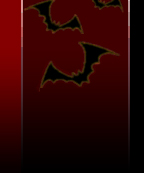|
Castlevania: Circle of the Moon (2001)

Check out the Unofficial Castlevania: Circle of the Moon site!
Ever since Symphony of the Night, Castlevania fans have clamored relentless for a sequel. Was the series destined to move to 3D and stay there? Nintendo and Konami puts these fears to rest with the announcements of one of the first Game Boy Advance titles: Castlevania: Circle of the Moon. While not exactly a true sequel to Symphony, many of the elements contained in the games are the same, and the game even stays true to its Castlevania roots by putting you in the role of a whip-wielding hero. The game begins with Dracula's resurrection by Carmilla, before Nathan Graves, his Hugh Baldwin and their master, Morris Baldwin, steps in. The count causes the floor beneath Nathan and Hugh to crumble, causing them to be seperated from Morris. Hugh sets off on his own to save his father, telling Nathan to leave the castle. Not willing to just give up, Nathan begins the exploration of the caves beneath Castlevania.
Many elements are directly from Symphony - the map looks identical (click here to see it), enemy names and numerical damage indicators pop up when you attack, and there are a variety of items scattered around, like stat-improving relics that increase HP or heart maximum, and other relics that give Nathan special abilities (like the Dash Boots obtained early in the game, which thankfully allows quick exploration.) Experience is gained from killing enemies as before, and there are various items to equip on your body and arms. Nathan has a slide attack and can swing his whip in a circular motion, like Richter could in SOTN.
One of the biggest differences in level structure is that Castlevania is a lot more wide-open and focused less on small passages. As a result, there's a lot more platform jumping to be found here - especially in stages like the Machine Tower. However, since this is a cartridge game, and while the graphics are excellent (even on the small screen), the castle areas lack the variety found in Symphony, so many of the areas end up feeling and looking the same.
There aren't many items to find in the game, but their purpose has been replaced by the DSS card system. Various enemies will drop a total of 20 different cards, whose attributes can be combined for a varying number of effects. One allows you to alter your whip attributes - make it engulf the enemy in flame, turn them to stone, or simply lengthen its reach. There are tons of other stat-altering effects, like awarding experience as you walk, extending invulernability time after damage, increased defense as you uncover more the castle - there's simply a lot of depth hidden in these cards, and is far more managable than the legion of near-useless items in Symphony.
One of the most obvious differences from the beginning is the difficulty level. As good as Symphony was, it wasn't very hard - considering the nature of previous games, it was just a tad disappointing to play a Castlevania game that was essentially a walk in the park. While the difficulty is not overwhelming, you'll have to summon your old twitch reflexes if you want to beat some of the bosses in the game.
Circle of the Moon uses a surprisingly large amount of old music from other Castlevania games: the save select screen is exactly the same as Rondo of Blood (a very impressive feat for the sound programmers), the intro and boss themes are from Castlevania 64, and various other music spread across the series has found their way here. There are a handful of original themes, and most of them are excellent. However, as with the repetetive graphics, the music suffers too - there simply isn't very much music, and even the better songs tend to get old when its played constantly.
Castlevania: Circle of the Moon is, quite simply, the reason I bought my Game Boy Advance. It combines the non-linear action-RPG elements of Symphony with somewhat more traditional Castlevania gameplay, and ends up with an addicting, immensely fun title.
Circle of the Moon Artwork

Back to Top
Castlevania Games - Castlevania: Circle of the Moon
|
|
|



